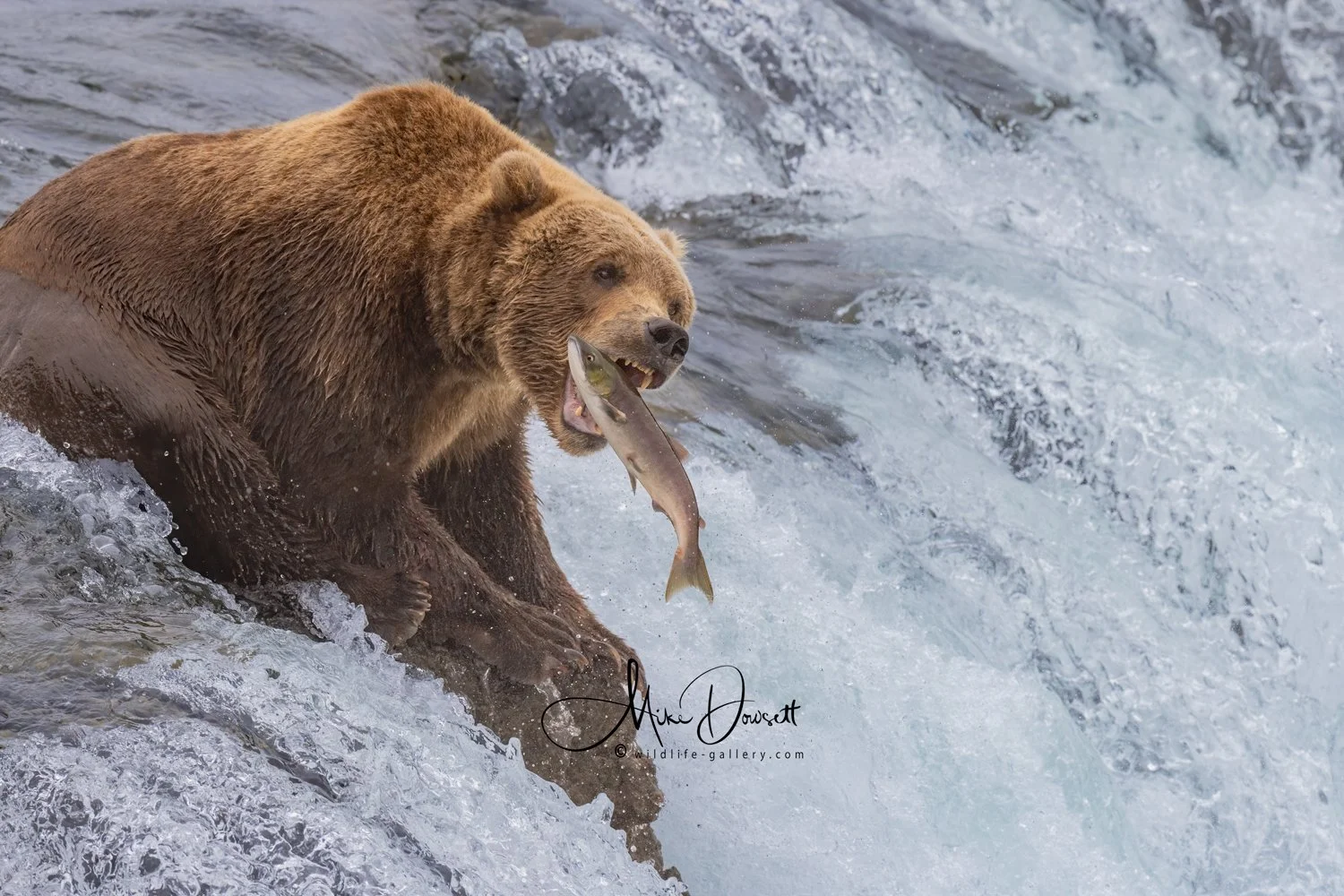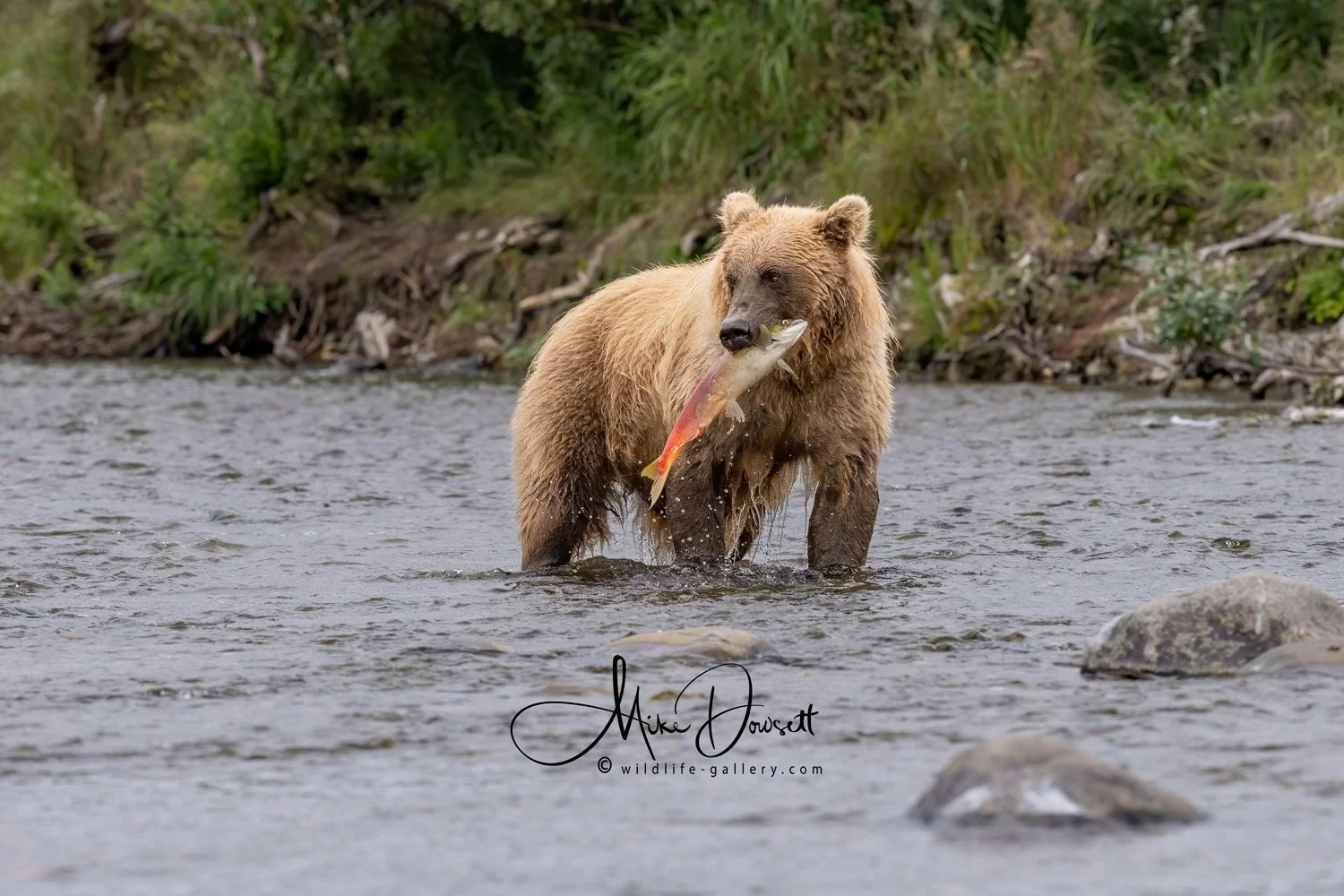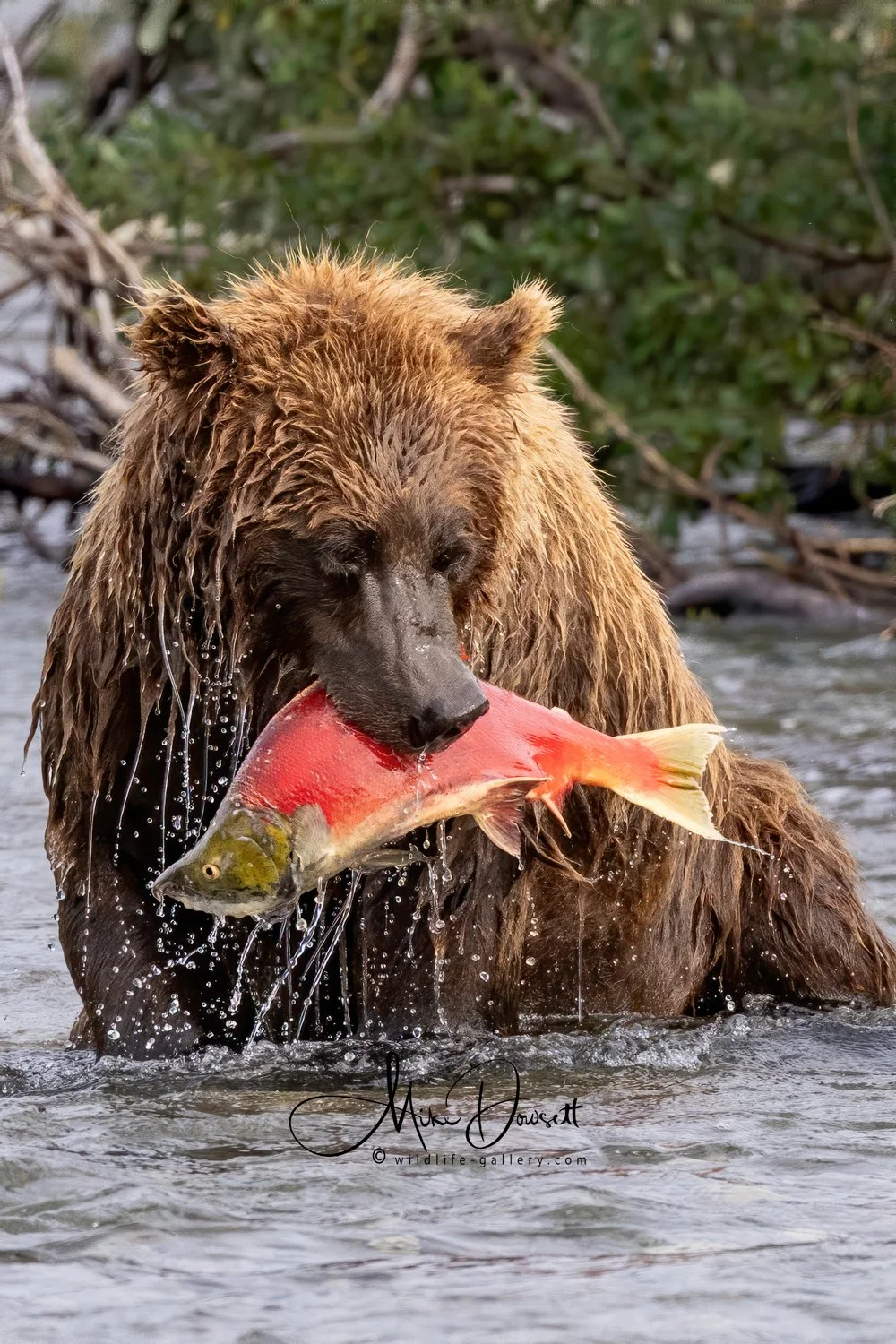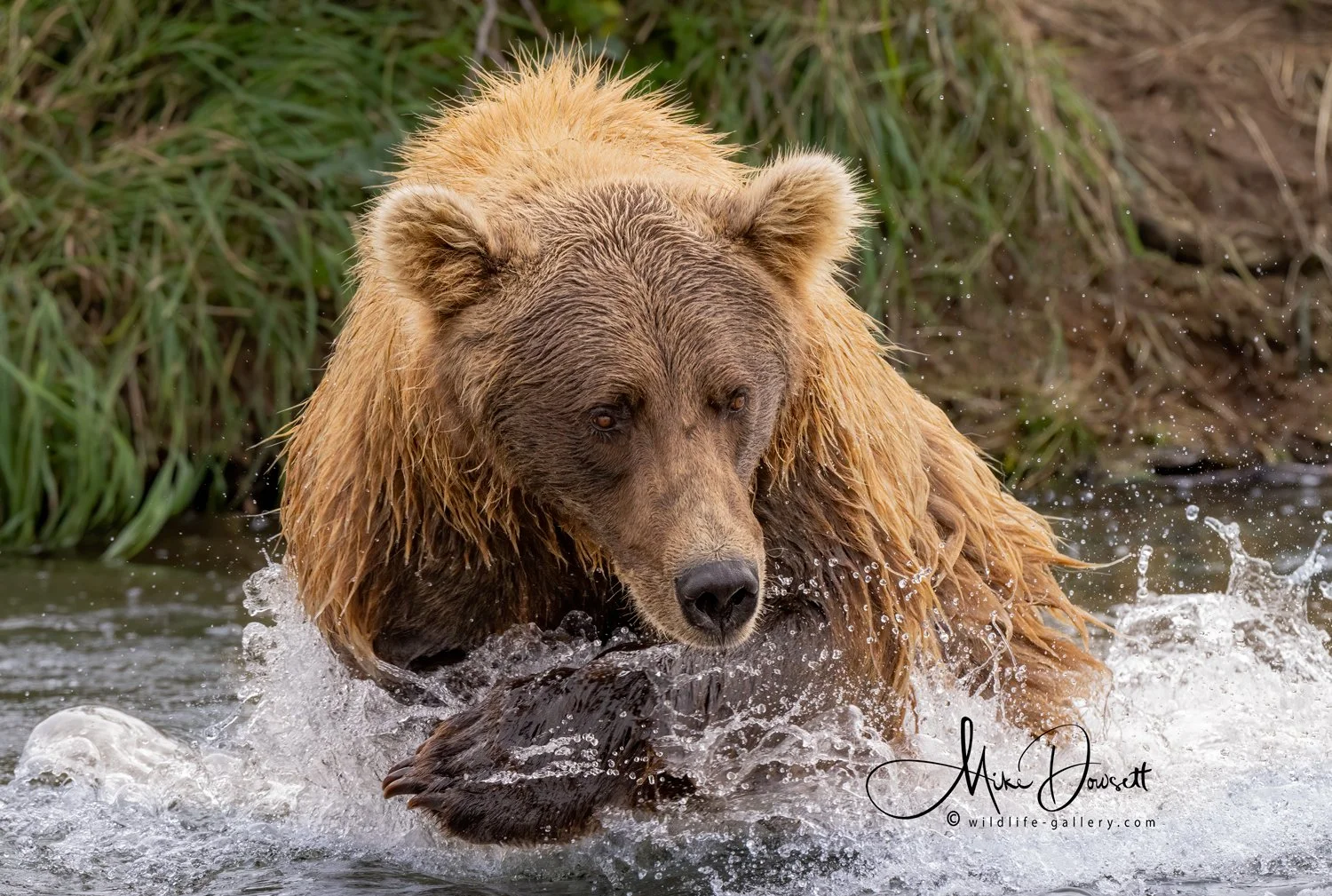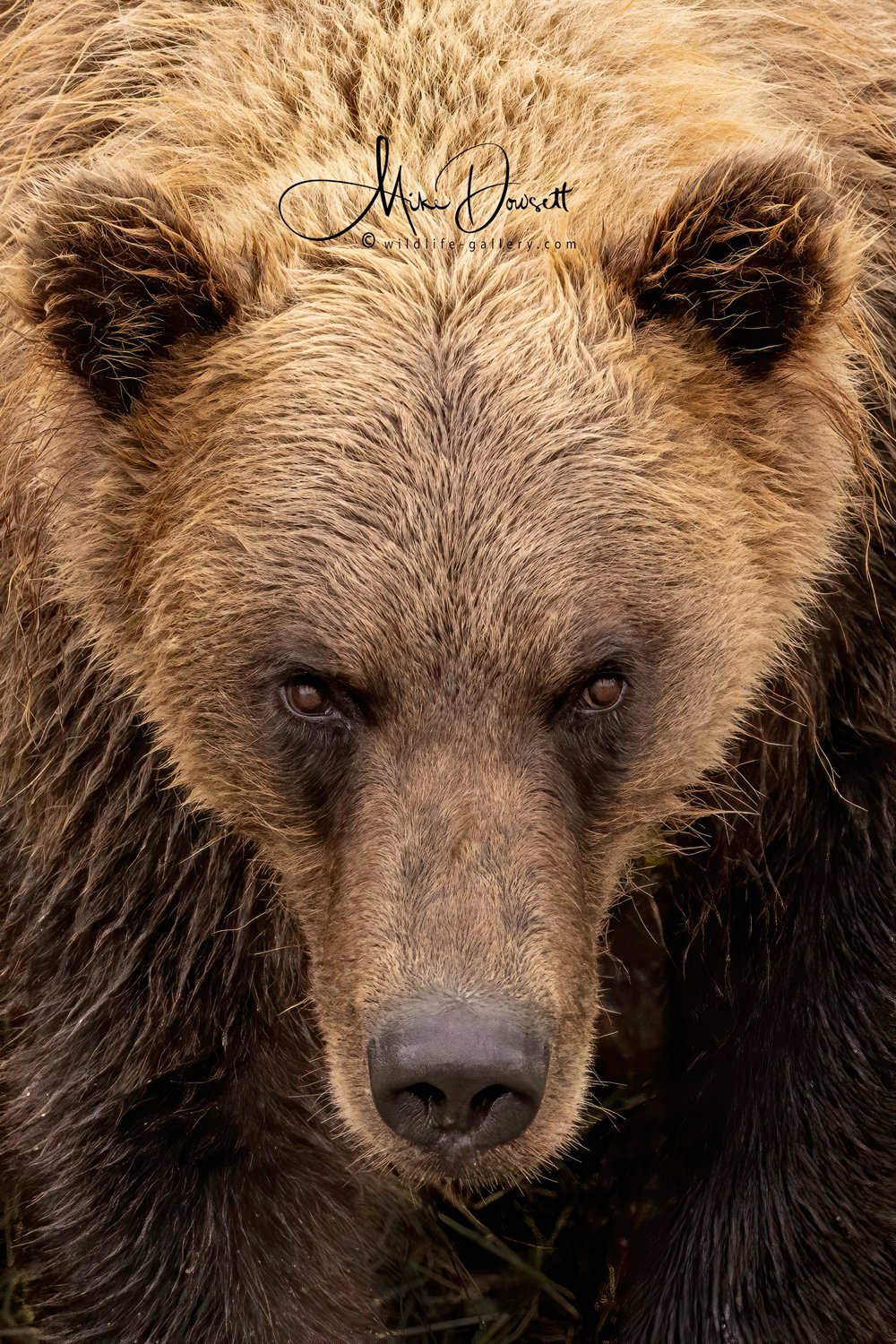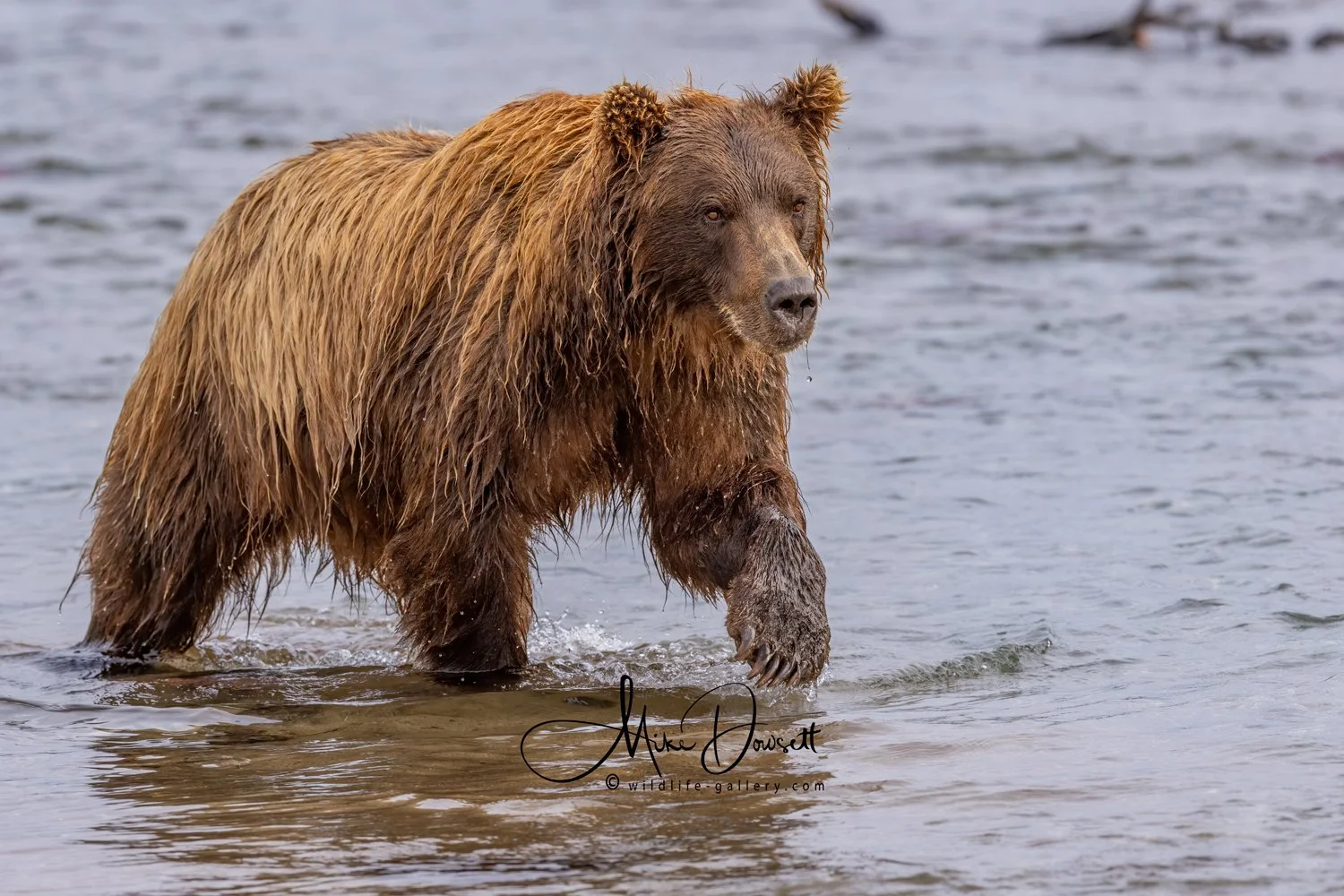THE Bear GALLERY, BY MIKE DOWSETT
The gallery below shows high quality photographs of Alaskan Coastal Brown Bears, also known as Grizzly Bears plus some AK Black Bears.
© The copyright for all images on this website is owned exclusively by Mike Dowsett. Do not copy or reproduce without prior permission. ©
A Grizzly Bear [Coastal Brown Bear] in in the Katmai National Park, catching salmon in the famous Brooks Falls. The bears sit in the waterfall and wait for the salmon to jump - Easy huh !
* PLEASE CLICK ON ANY THUMBNAIL IMAGE BELOW TO ENLARGE *
It may take a few seconds to fully load due to the file size
The grizzly bear is a North American sub-species of the brown bear. Grizzly bears are typically brown, though their fur can appear to be white, cream, or grizzled, hence their common name. You can see these lighter colored bears in gallery above. Grizzly bears are protected by law in most of the United States but not in Alaska—though there have been some attempts to remove those lower 48 protections recently.
These incredible apex predators typically live a lonely life with the exception of mommas and their cubs; but at times they do congregate. Large numbers of grizzly bears can be seen at the best Alaskan fishing spots when the migrating salmon run upstream for summer spawning. In this season, many bears gather to feed on the salmon, to take-on-board huge amounts of fat that will see them through the long winter hibernation. The images in the gallery above show many Grizzly bears feeding on sockeye salmon during the summer migration
Brown bears dig dens into the Alaskan hillsides for their winter hibernation. Females will give birth during this winter period, often to twins but as you can see in the gallery above, triplets are also quite common now.
Grizzly bears are incredibly powerful, top of the food chain apex predators, however a lot of their diet is made up of nuts, blueberries, cranberries, fruit, leaves, and roots. Bears also eat other animals, from rodents to moose.
Despite their massive size, grizzlies have been observed and measured running at 30mph. They can be very dangerous to humans, particularly if they are surprised or if humans come between a mother and her cubs. The other human behavior that triggers a Grizzly attack is when someone runs away from the bear. This triggers an instinctive predator/prey ‘attack’ mode, that often ends badly for the human.
A Grizzly bear home range can encompass up to 600 square miles; so their ideal habitat is one that is isolated from human development and has plenty of food and places to dig their dens = Alsaka, the last frontier.
Grizzly bears are considered a conservation success story. Since they gained protections under the U.S. Endangered Species Act, the population of grizzly bears has grown. The U.S. Fish and Wildlife Service established zones for the bears and set out to improve relationships between humans and bears by educating the public about these animals and establishing programs to reimburse ranchers for livestock bears killed.
Now there are more than five times the number of grizzlies than there were in 1975—and about 1,400 to 1,700 in the contiguous U.S. But they aren’t in the clear just yet. While the U.S. Fish and Wildlife Service has tried to delist grizzly bears twice, both attempts have been blocked.
Keywords: Brown Bear, Grizzly Bear, Alaska, Brooks Falls, Salmon fishing Bears, Alaska Fishing Bears, Lake Clark, Katmai National Park, McNeil River Bears, McNeil Falls, Bears Fishing, Bears running, nature, wildlife, mike dowsett, wildlife-gallery,
